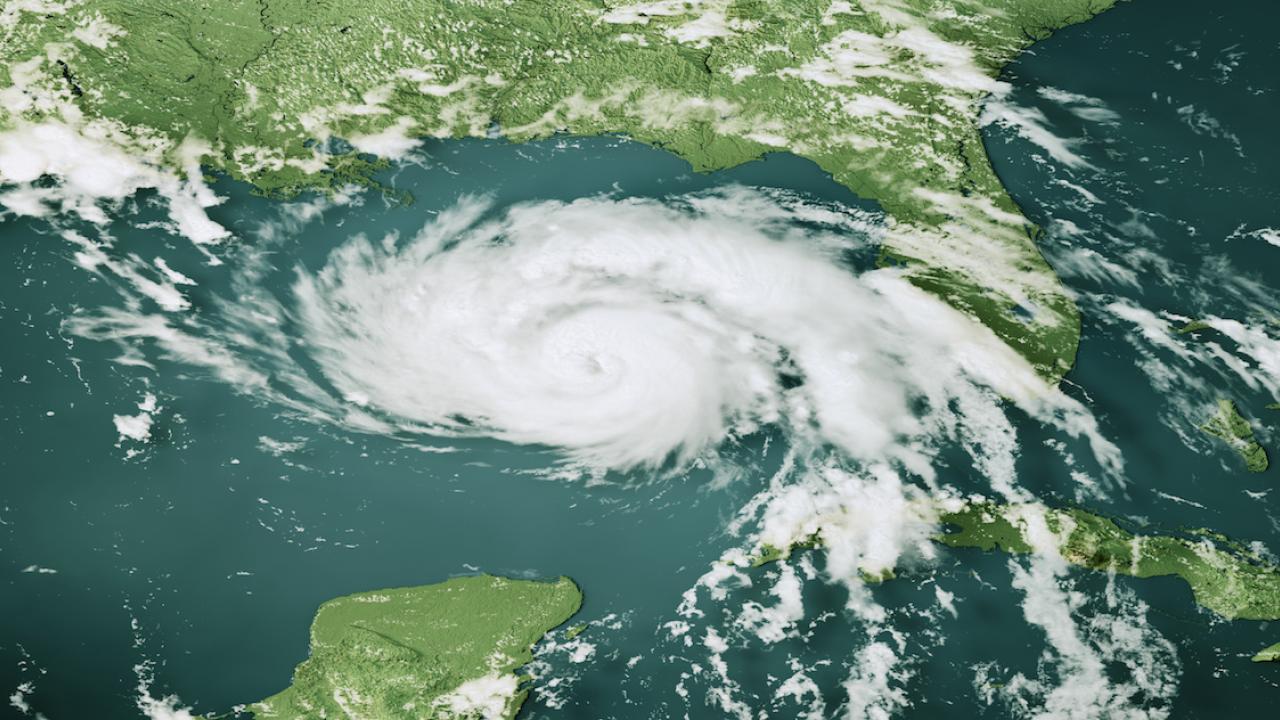
Over recent decades, hurricanes and other tropical cyclones in the U.S. were associated with up to 33.4 percent higher death rates from several major causes in subsequent months. Results of a study by researchers at Columbia University Mailman School of Public Health, Colorado State University, Imperial College London, and Harvard T. H. Chan School of Public Health are published in the journal JAMA.
The study exemplifies how far-reaching and varied the hidden costs to life could be from climate-related disasters and climate change. Until now, there had been a critical knowledge gap about cause-specific tropical cyclone mortality risks from a large-scale study covering the entire U.S. across multiple decades.
After collecting 33.6 million U.S. death records from 1988 to 2018, the researchers used a statistical model to calculate how death rates changed after tropical cyclones and hurricanes (a subset of the strongest tropical cyclones) when compared to equivalent periods in other years.
The researchers found the largest overall increase in the month of hurricanes for injuries (33.4 percent), with increases in death rates in the month after tropical cyclones for injuries (3.7 percent), infectious and parasitic diseases (1.8 percent), respiratory diseases (1.3 percent), cardiovascular diseases (1.2 percent), and neuropsychiatric conditions (1.2 percent).
Residents of 1206 counties, covering half of the entire U.S. population, experienced at least one tropical cyclone during the study period. Tropical cyclones were most frequent in eastern and south-eastern coastal counties.
“Recent tropical cyclone seasons—which have yielded stronger, more active, and longer-lasting tropical cyclones than previously recorded—indicate that tropical cyclones will remain an important public health concern,” said Robbie Parks, PhD, a post-doctoral research scientist at Columbia Mailman, and first author. “Our results show that tropical cyclones in the U.S. were associated with increases in deaths for several major causes of death, speaking to the ‘hidden burden’ of climate-related exposures and climate change. An outsized proportion of low-income and historically-disadvantaged communities in the United States reside in tropical cyclone-affected areas; understanding the public health consequences of climate-related disasters such as hurricanes and other tropical cyclones is an essential component of environmental justice.”
Female injury death rate increases (46.5 percent) were higher than males (27.6 percent) in the month of hurricanes. Death rate increases were higher for those aged 65 years or older in the month after tropical cyclones (6.4 percent) when compared with younger ages (2.7 percent).
“In the U.S., tropical cyclones, such as hurricanes and tropical storms, have a devastating effect on society, yet a comprehensive assessment of their continuing health impacts had been lacking,” said Marianthi-Anna Kioumourtzoglou, ScD, assistant professor of Environmental Health Sciences at Columbia Mailman, and senior author. “Our study is a first major step in better understanding how cyclones may affect deaths, which provides an essential foundation for improving resilience to climate-related disasters across the days, weeks, months, and years after they wreak destruction.”
Co-authors are Jaime Benavides, Columbia Mailman School of Public Health; G. Brooke Anderson, Colorado State University; Rachel Nethery, and Francesca Dominici, Harvard Chan School of Public Health; Majid Ezzati, Imperial College, London; and Ana Navas-Acien, Columbia Mailman School.
The study was supported by the National Institute of Environmental Health Sciences (grants ES033742, ES030616, ES028805, ES028033, MD012769, AG066793, ES029950, AG060232, AG071024, ES028472, ES009089, ES010349); a Wellcome Trust Pathways to Equitable Healthy Cities grant (209376/Z/17/Z); the UK Medical Research Council (MR/S019669/1); and the British Heart Foundation Imperial College Centre for Research Excellence (RE/18/4/34215). Work on the U.S. mortality data was supported by the U.S. Environmental Protection Agency, as part of the Center for Clean Air Climate Solution.
продать аккаунт покупка аккаунтов
магазин аккаунтов платформа для покупки аккаунтов
аккаунт для рекламы маркетплейс аккаунтов
маркетплейс аккаунтов соцсетей профиль с подписчиками
Buy Account Account Exchange Service
Account trading platform Account Market
Account Exchange Service Account marketplace
Account Selling Platform Buy accounts
account trading platform account buying platform
marketplace for ready-made accounts account trading platform
marketplace for ready-made accounts marketplace for ready-made accounts
account catalog sell pre-made account
buy pre-made account account exchange service
account market sell pre-made account
database of accounts for sale accounts market
buy and sell accounts sell pre-made account
website for selling accounts https://accounts-buy-now.org/
account purchase account sale
website for selling accounts purchase ready-made accounts
gaming account marketplace accounts market
buy pre-made account https://social-accounts-marketplaces.live/
accounts for sale https://buy-accounts.space
продажа аккаунтов https://akkaunty-na-prodazhu.pro/
купить аккаунт https://kupit-akkaunt.xyz
площадка для продажи аккаунтов https://akkaunty-market.live
покупка аккаунтов https://akkaunty-optom.live
маркетплейс аккаунтов соцсетей https://akkaunty-dlya-prodazhi.pro/
facebook ad account buy https://buy-adsaccounts.work
facebook ad accounts for sale buy facebook account
buy fb ad account buy aged fb account
buy facebook ad account buy account facebook ads
buy google ad threshold account https://buy-ads-account.top
buy google ads threshold accounts google ads account for sale
verified business manager for sale buy-business-manager.org
fb bussiness manager buy-business-manager-verified.org
buy tiktok ads account https://tiktok-ads-account-buy.org
buy tiktok ad account https://tiktok-agency-account-for-sale.org
facebook accounts to buy sell account sell pre-made account